Classification of wind instruments is more about how sound is being produced than what the instrument is made of.
The saxophone is considered a woodwind instrument because it uses a reed to make sound rather than a brass mouthpiece. The “wood” of woodwind in this case indicates the reed.
In the case of the saxophone, it is typically considered a woodwind instrument despite being made almost entirely of metal because of the way it produces sound and the way that sound is manipulated.
♫ Instrument classification in general is an imperfect science. In some cases, how its used dictates grouping, in others tradition, and in still others means of producing sound.
Like the clarinet, the saxophone is a single-reed instrument meaning that its sound is made by a single piece of wood vibrating at the mouthpiece.
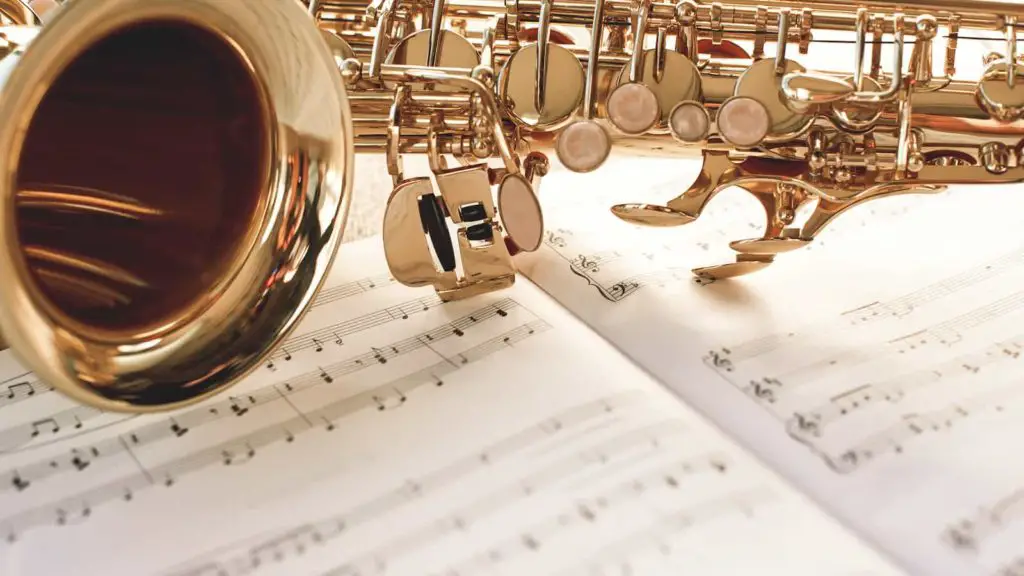
The player pushes air into the mouthpiece, causing the reed to vibrate rapidly. That sound is then carried through the body of the instrument and manipulated into different notes by pushing down the various keys.
Those keys cover holes in the body’s length. It’s a whole lot like the recorder you played in third grade but with a bunch of extra parts.
Difference between woodwind and brass.
As stated above, the main difference between woodwind and brass instruments is how the sound is produced (brass instruments require buzzing of the lips while woodwinds do not), but another key difference is how that sound is manipulated. Brass instruments use valves and slides to manipulate the length of the instrument and, therefore, pitch, while woodwind instruments cover holes on the body of the instrument.
Defining woodwind instruments by their mouthpieces is a tricky business because there are a variety of different woodwind instruments with different mouthpieces. Consider the clarinet, the flute, the oboe and the recorder:
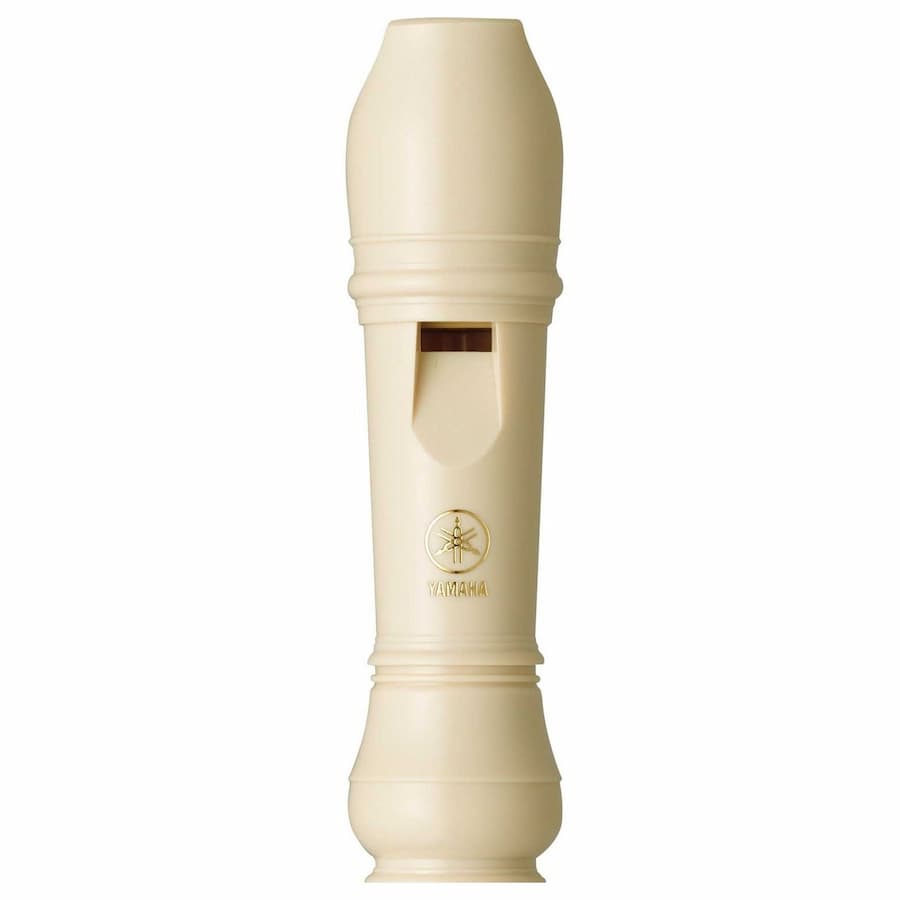
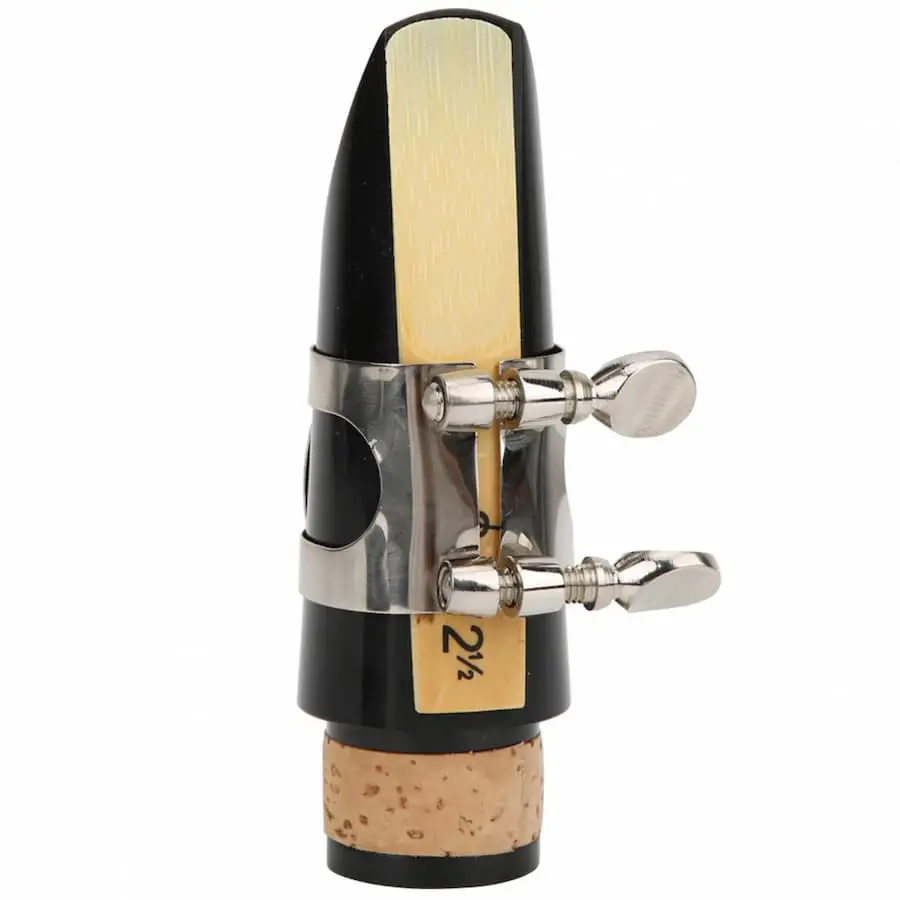
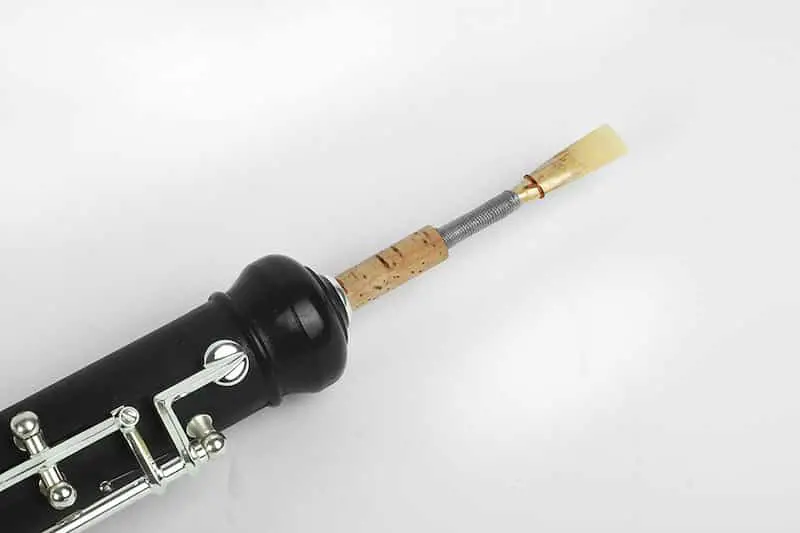
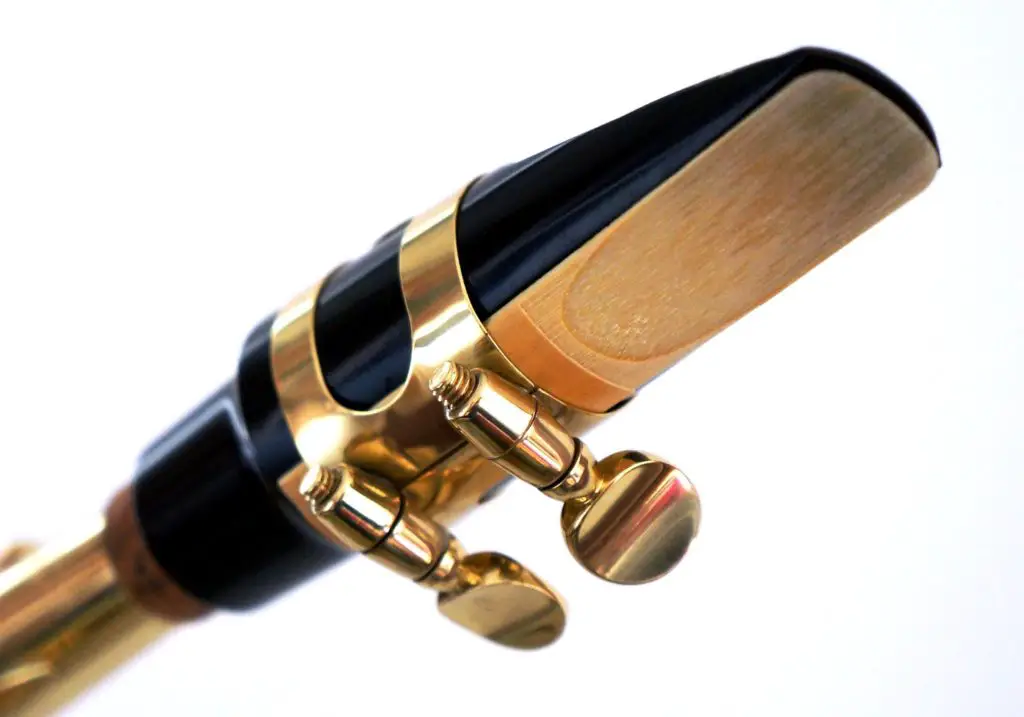
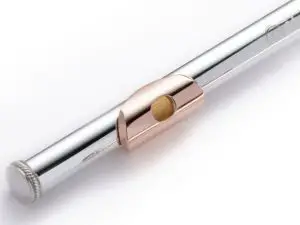
All four would technically be considered woodwinds but all four have vastly different means of producing sound.
- The clarinet (and saxophone) uses a wooden reed that vibrates to produce a tone.
- The flute sound is made by blowing across the hole much like the way you can blow across a bottle top and get a pitch.
- The oboe makes use of two reeds that are held together to vibrate against each other.
- The recorder works somewhat like a whistle in that you blow air into the top and the little hole splits the air to produce sound.
If we were to classify woodwind instruments only by the way sound is made we would have a tough time of it!
Classifying them by what they are made of is also out of the question considering that oboes and clarinets are made of either wood or plastic, flutes and saxophones both are made of metal, and the recorder you probably played in grade school was made of plastic.
Brass instruments don’t suffer these kinds of differences. Brass mouthpieces are all generally the same with the exception of size and shape.
To some degree, if we were classifying woodwinds by mouthpiece alone they could be thought of as what is NOT included in brass, strings, or percussion.
There is a second aspect of woodwind instruments, however, that is equally important and consistent across each of the woodwind instruments listed above.
When playing a woodwind instrument, the performer will use keys or, in some cases, just their fingers to cover holes along the body of the instrument. Covering different combinations of those holes gives you all the different notes.
Brass, on the other hand, uses valves or slides that redirect air through sections of tubing that are of different lengths to change notes.
♫ For instance: if you play an open C (concert Bb) on the trumpet and then push down the middle valve the pitch (or sound) will drop a half step because the air is now going through slightly more tubing than it was before.
If you combine these two factors – mouthpiece being different from brass and covering holes rather than using valves or slides – then the category of woodwinds starts to make sense.
While it is the least important of the three, the function of woodwind instruments is worth discussing. Generally speaking, woodwind instruments have different musical “jobs” than brass instruments.
When you think of sensitive, intimate musical moments more often than not a woodwind instrument is the one playing. On the other hand, when you think of bombastic fanfare, brass immediately comes to mind.
This is not to say that brass instruments can’t play sensitive passages, or that woodwind instruments can’t be bombastic, but simply that their characteristic sounds function better in certain settings. Think of the piece Fanfare For The Common Man by Aaron Copeland.
Fanfare For The Common Man is (big surprise) a fanfare celebrating the virtues and victories of the common man. Starting with loud percussion hits the piece and then declares a strong but simple melody played by trumpet (or even solo trumpet). This idea is expanded upon by adding horns and other brass.
But when listening to Fanfare For the Common Man it seems to make perfect sense that it is being played entirely by brass. A piece like that wouldn’t communicate its ideas as effectively were it played by a woodwind ensemble.
Alternatively, think about the beautiful, singing melody in the second movement of Rachmaninoff’s second piano concerto. Played first on flute and then taken over by a clarinet, this delicate motif would, quite frankly, be disruptive were it to be played on a brass instrument.
When composers are considering how best to communicate their musical ideas they consider the tone and function of the different sections and most of the woodwind instruments make sense in that category.
The astute reader will notice the use of the word “most” in that sentence and be wondering what instrument maybe doesn’t belong.
Well, it’s the saxophone. But, to some degree, this is by design!
♫ The saxophone was invented to serve as a bridge between brass and woodwinds. It has a similar range and texture to the french horn and has the volume necessary to compete with the brass section but with the tone of a woodwind.
Because of this, the saxophone blurs the line of function somewhat. Often it can be grouped with the brass in a composition or it can be grouped with the woodwinds.
On a technical level, the saxophone still belongs in the woodwind section, but it’s comfortable hanging out with the brass when called for.
This leads us to an understanding of why saxophones are sometimes called horns. The full answer to that is in this article. Why Saxophones Are Sometimes Called Horns! (Is Sax a Horn?)
Brief History of the Saxophone
The saxophone was invented by a man named Antoine-Joseph “Adolphe” Sax. Born into a family of instrument makers, Adolphe grew up in a musical household and surrounded musical innovation. He was a clarinet and flute player and went on to study at the Royal Conservatory of Brussels.
Adolphe wasn’t content just to build and modify conventional instruments, he took it upon himself to design and build his own. While he is most remembered for his invention of the saxophone, he invented several other instruments. One notable instrument was what was called the “Saxhorn,” which was similar to the modern-day euphonium.
The Saxhorn was actually a family of instruments and was apparently fairly popular after it was invented.
In his opera Les Troyens, Hector Berlioz wrote for off-stage saxhorns to be played at certain moments. Berlioz also arranged a version of Chant Sacre’ for a saxhorn ensemble.
Sadly, no manuscript of this arrangement exists today but it is safe to say that Adolphe Sax was a respected instrument maker and innovator in his day.
The saxophone was invented somewhere around 1840 by Adlophe Sax and likely sprang out of the innovations he made to the bass clarinet.
Planned from the beginning to be a family of instruments, the first saxophone to have made a public appearance was the bass saxophone in Bb.
It debuted officially at the French Exhibition of Industry Products in 1844. Many of his initial designs for the instrument were wooden but Adolphe switched to using brass for the body of the instrument (further muddying its place as a “woodwind” instrument).
Adolphe’s intent with the saxophone was to bridge the gap between woodwind instruments and brass instruments. The saxophone would be a sort of hybrid, carrying the volume and projection of a brass instrument but with the tone and playability of a woodwind instrument.
Adolphe officially patented the family of instruments in 1846 and spent the next two decades defending that patent until it expired in 1866. At this point, other companies started producing their own saxophones.
The saxophone did well among military bands functioning as a powerful woodwind that could match the brass instruments, but was not so readily accepted in the orchestra. While composers like Berlioz and Strauss were intrigued by it, no one really wrote much orchestral music that included it.
The bass saxophone was written for in the score of Le dernier roi de Juda by George Kastner and was the first scored performance of the instrument. Beyond this, however, the saxophone seemed to be more of a novelty to orchestral composers.
There were other composers and performers who latched onto the instrument but it didn’t see widespread use in the orchestra. In 1888 the saxophone made its way to the United States and was being produced by Charles Gerrard from Elkhart, Indiana. Not surprisingly it was made mostly for military bands but it slowly grew a foothold in American music.
Patrick Gilmore, a civil war veteran and famous bandmaster, is credited as the first wind band leader to make use of the saxophone in his ensemble. In the early 1900s school wind bands began to pop up and music was given its own class rather than just being an extracurricular activity.
By the 1920s school band programs had cemented themselves as an important educational outlet and as a community ensemble that could play for things like parades and sporting events. So, as a result, the saxophone became an integral part of American music education.
Also, in the 1920s the saxophone gained significant popularity as a staple instrument in jazz. The performer Sidney Bechet popularized the use of the soprano saxophone and other powerhouse musicians like John Coltraine and Charlie Parker took jazz music by storm and showed the United States what the saxophone was capable of.
Eventually, the alto and tenor saxophone cemented themselves as some of the most iconic jazz instruments. When most people think of jazz, they think of the saxophone.
In the 1930s jazz big bands grew in popularity which included saxophones as their own section. Usually seated at the front of a big band, the saxophone typically includes 4-5 players with a mix of alto, tenor, and baritone saxophone with occasional soprano sax use as well.
♫ To this day saxophone is integral to many genres outside of jazz and classical. Third-wave ska bands have been using saxophone since the 1980s and even before. Additionally, many modern artists from multiple genres including but not limited to The Deerhunter, David Bowie, Mitski, and St. Vincent have made use of the saxophone’s unique sound.
Why is the saxophone not in the Orchestra?
The short answer is that it is in the orchestra……kind of.
It’s not uncommon to see saxophones being used in the modern orchestra but their place is often that of a visitor. The biggest reason for this is repertoire.
The orchestra as an ensemble has existed in some form or another since the 1600s and the saxophone wasn’t patented until 1846. This means that we have more than 200 years worth of music being written for an orchestra before the saxophone even came along.
Even after it was patented, however, the saxophone didn’t gain widespread popularity. As described above, it was largely relegated to military bands. It wasn’t really picked up by orchestral composers until the early 1900s and saw a small explosion in the 1950s and beyond.
Some of it is a little more philosophical as well. What we think of as the orchestra is really more of a string orchestra. The violins, violas, cellos, and basses are at the center of that ensemble and many orchestral performances can be done with little to no wind instruments.
This article is not about the history of the orchestra but suffice it to say that strings are the core of it with wind and percussion instruments viewed more as additions to the orchestra rather than initially integral parts. There is a large amount of repertoire for wind band, however, that includes saxophone.
♫ Due to the saxophone’s history with wind bands in the united states, you’d be hard-pressed to find band music WITHOUT a saxophone. Repertoire for beginners up through professionals that includes saxophone abounds among symphonic bands.
Plenty of modern composers make use of the saxophone in an orchestral setting and it may eventually work its way into being a staple wind instrument in that ensemble, but for now it functions as an occasional splash of color more so than a critical element.
Is Saxophone Hard to Play?
This question is always a difficult one because every instrument comes with its own challenges but it is worth discussing.
For many, producing sound on a saxophone isn’t terribly hard. Once you get the embouchure right you can explore a fairly broad range of notes by simply learning fingerings.
This is very different from an instrument like the trumpet where the performer needs to make changes to their embouchure to get out many of the different notes. Beginner saxophone players will quickly be able to play significantly more notes than their brass friends, but it does come with a trade-off.
The saxophone has a LOT of keys and it can make remembering some of the fingerings kind of complicated for some. Additionally, while making sound a saxophone may not be all that hard, making a good sound tends to be.
Beginner saxophone players often honk away loudly for a while before they learn to control their tone and volume.
Is the saxophone a transposing instrument?
Yes, the saxophone is a transposing instrument meaning that the note the performer reads is different from the actual pitch that comes out of their instrument. A beginner alto sax player will read a C and the note that actually comes out when they play is an Eb.
Other saxophones like Soprano and Tenor saxophone are Bb transposing instruments meaning that when they read the note C, the note they actually play is a Bb. This is done so that saxophone players can switch between instruments without having to re-learn too many fingerings.
While this makes for more headache for the band director, the music is written such that when a sax player plays what’s on the page it will sound good with other members of the band despite being a transposing instrument.
Is the saxophone a good beginner instrument?
The saxophone is as good of a beginner instrument as any other band instrument. While there are some schools that start students on clarinet and then move them to saxophone in their second year, there are plenty of schools that just start students on saxophone. With a good teacher, a young beginner can become proficient on the saxophone.
There are hurdles to learning it, though. Saxophones have a tendency to be somewhat prohibitively expensive for students. A solid beginner clarinet may cost somewhere between $700-$800 but a saxophone of similar quality is going to be more around $2000-$2500. Most people don’t buy their instruments outright and instead finance them or do rent-to-own programs.
Note: Interested in buying a Saxophone? Be sure to read this article so you know which brands to avoid. Ultimate Saxophone Buyers Guide
On top of the initial price, reeds need to be purchased fairly regularly, particularly for younger beginners. This will come as no surprise but 5th-7th graders are not the best at keeping up with or maintaining things. As such, reeds get broken or lost often. But, even if they do keep up with their reeds, they don’t last forever and will need to be replaced.
Disclaimer: This post may contain affiliate links. We only recommend high-quality products that are used and recommended by real musicians. If you use these links to buy something we earn a small commission.
